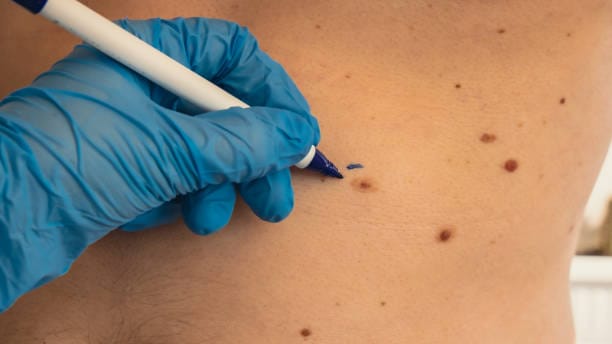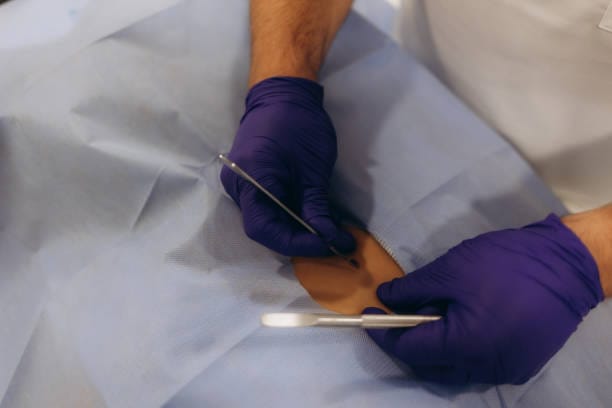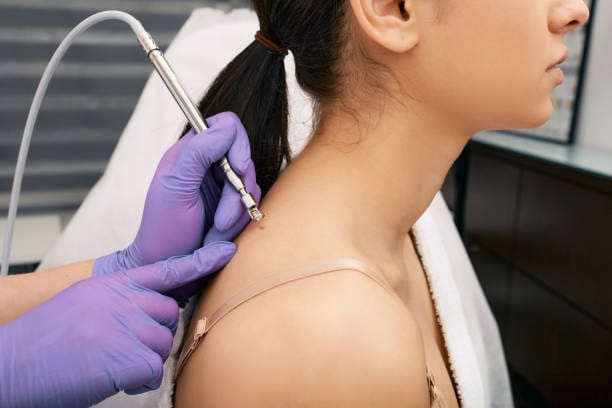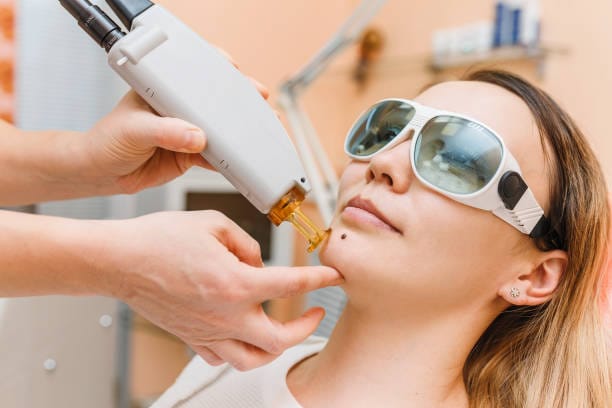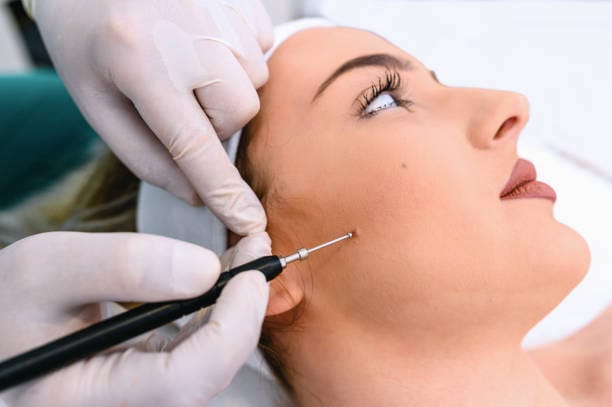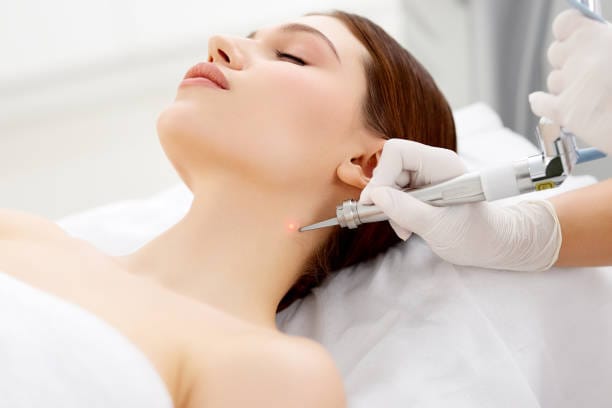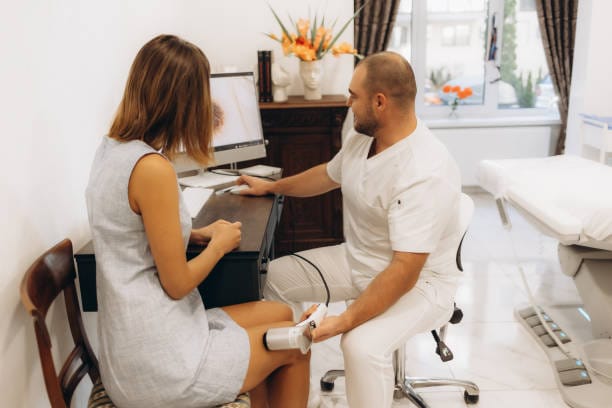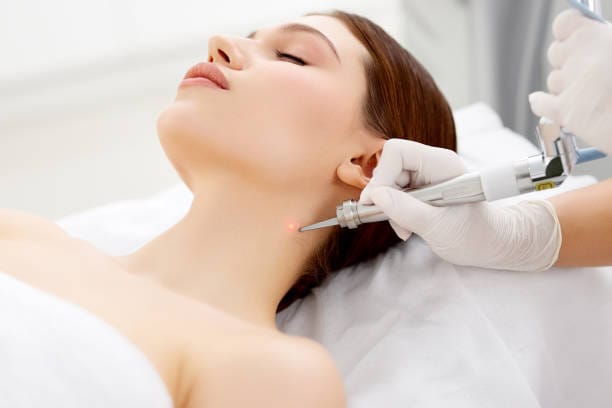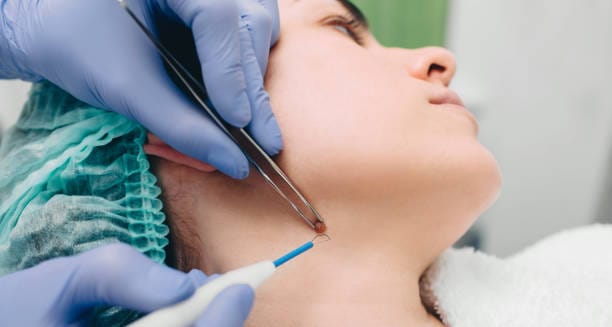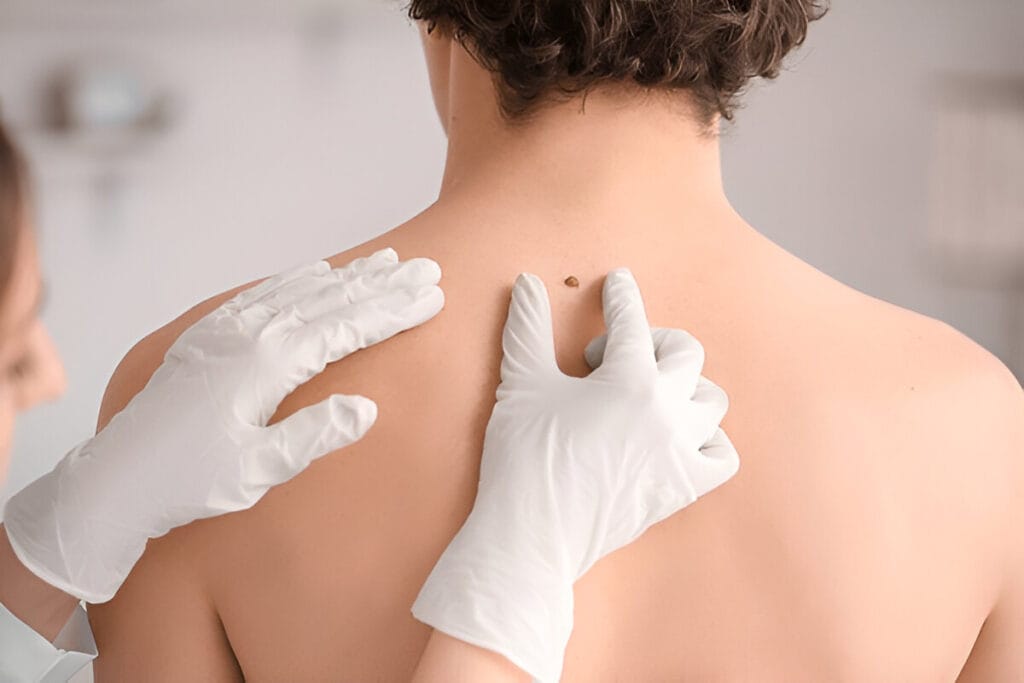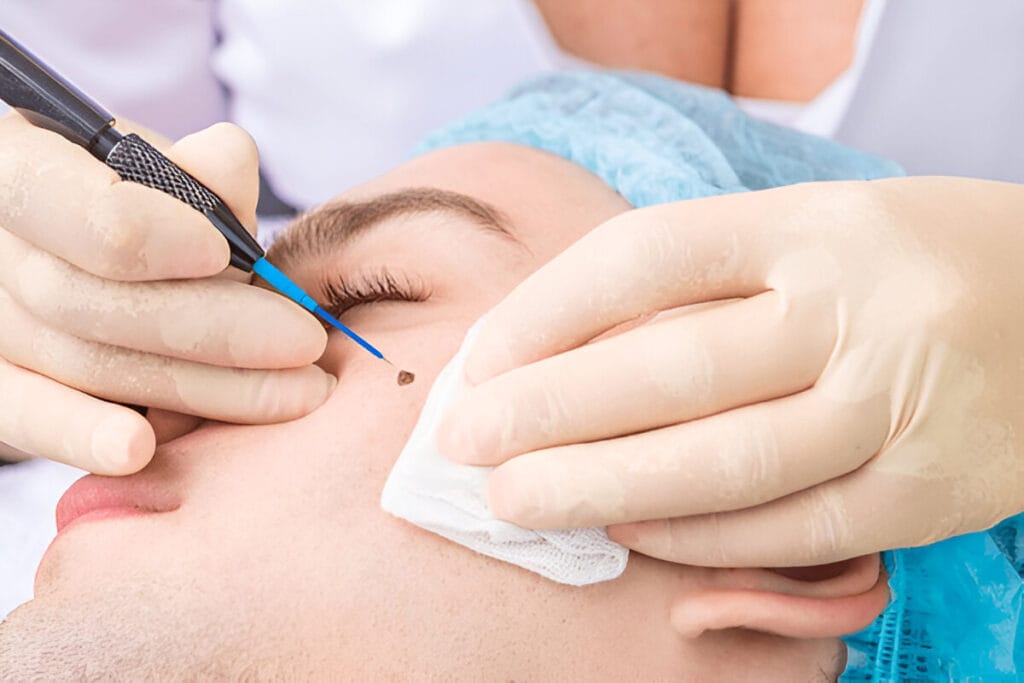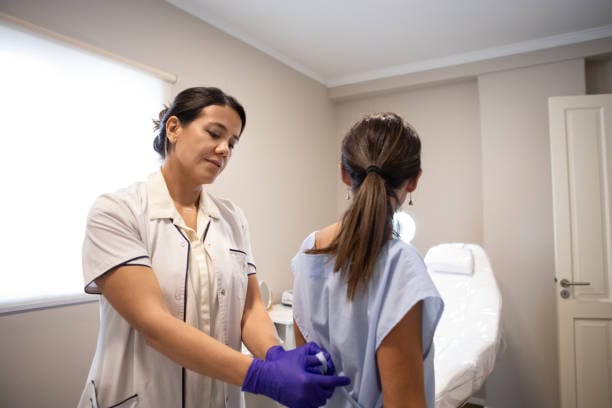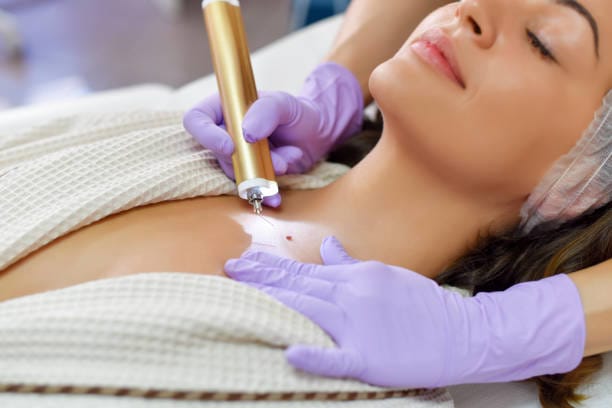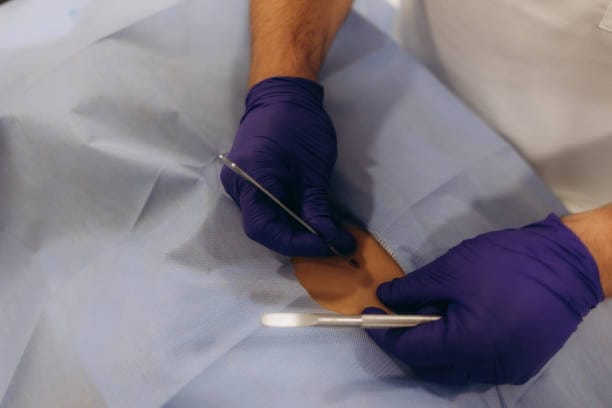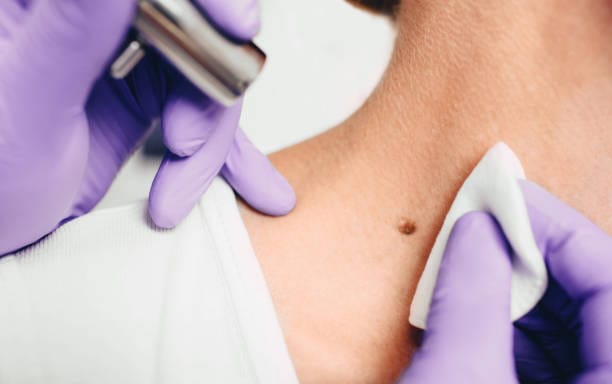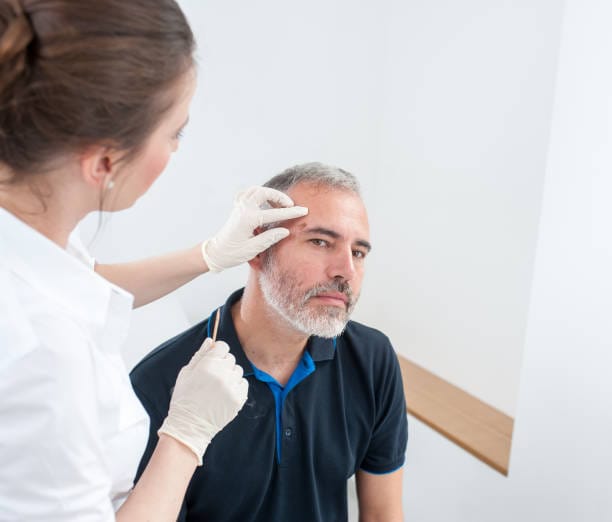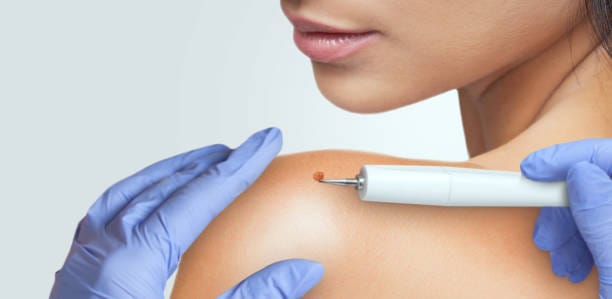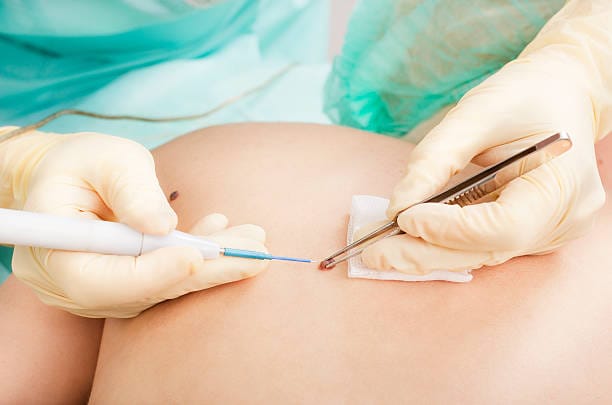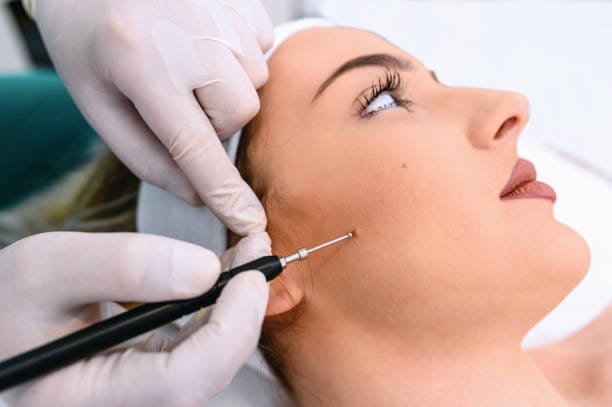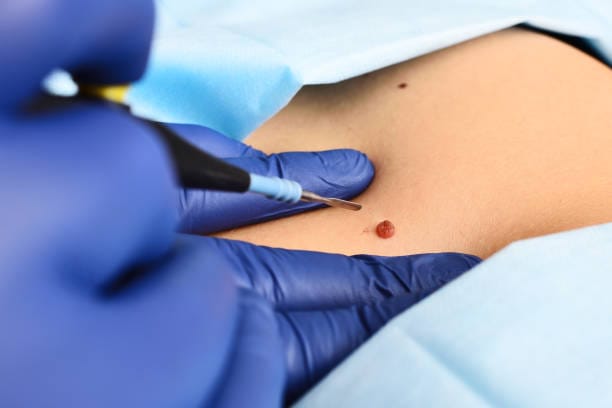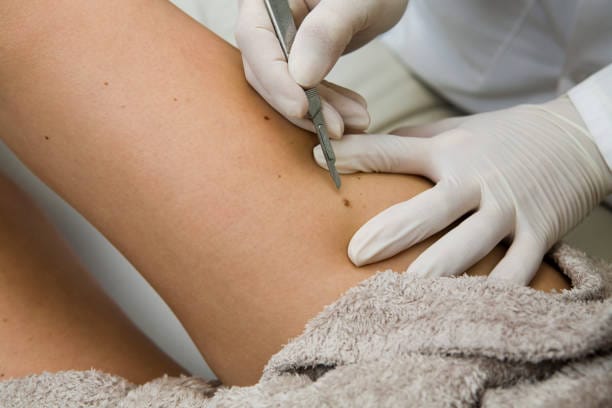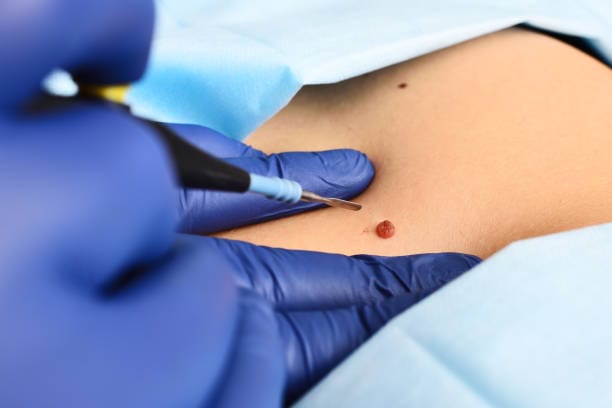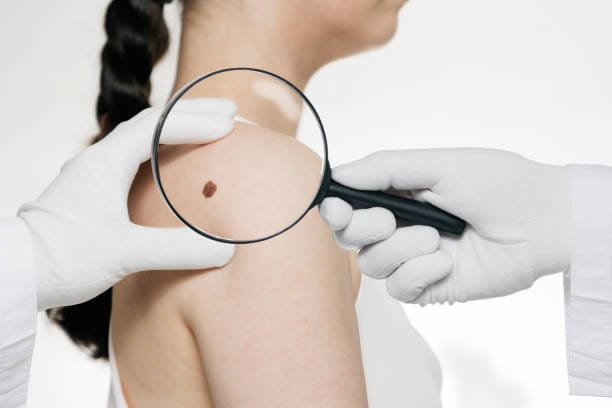Scar Free Mole Removal: Safe, Effective, and Painless Solutions
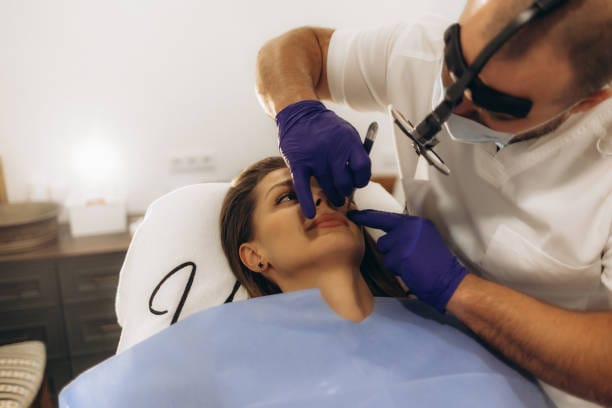
Best Practices of Scar Minimization After Scar Free Mole Removal Treatment
Scar Free Mole Removal is a common procedure. However, many individuals are concerned about the scars that can be left behind. The good news is that scar-free mole removal is possible with the right techniques and care afterwards! Whatever the reason you are removing a mole, your skin will heal just fine if you do so correctly.
In this guide, we’ll learn everything you need to know about removing mole scars without scarring, including the best treatments available, tips on the best aftercare, and the proficient methods to minimise scarring. It’s time to work on your dull, lifeless-looking skin and go for a shiny, healthy, glowing skin.
How Scarring Occurs: Scar Free Mole Removal
Although mole removal is simple, many fear what will happen after removal. Understanding how the skin heals and which factors influence scars is key to achieving scar-free mole removal. However, carefully following all the tips can help leave little to no marks on your skin and allow it to recover easily.
How the Skin Heals After Scar Free Mole Removal
When a mole is removed, the body begins healing automatically. This process has three main stages.
1. The treated area is red, swollen, or even a little tender during the inflammation phase. This is normal while the immune system seeks to heal the skin and close the wound against infection.
2. New skin cells start forming over it within the first 2 weeks during the Tissue Formation Phase. Stitches are used to close the skin to prevent scarring when they are used. It can scab and should not be picked because it protects healing tissue.
3. The next phase is the Remodeling Phase (up to 6 Months), during which the skin gradually strengthens and the redness or pigmentation fades. Proper aftercare speeds up this process, resulting in scar-free mole removal.
Why Some People Get More Scars Than Others
Not everyone heals the same. Factors that affect scarring include:
- Skin Type: However, if you have darker skin, you might develop hyperpigmentation, and those with lighter skin may leave red or pink scars. Keloid scars are more common in some people.
- Superficial Mole: Superficial moles can be removed with fewer scars. However, deeper moles may need stitches, and the chance of minor scarring increases.
- Some techniques, like Laser mole removal, cause less damage, as no damage occurs during the removal. It is an ideal technique for performing scar-free mole removal. Other techniques, like Surgical excision, might leave a fine line after mole removal.
- Poor aftercare: Scarring after treatment can get worse with continued bad aftercare, for example, by exposing them to excessive sun or picking at the scab.
Which Mole Removal Method Has the Lowest Risk of Scarring?
Looking for one of the best mole removal methods can help you get scar-free mole removal, as it selectively targets the mole without cutting the skin.
Raise Excision – This is good for raised moles and heals well with little scarring with diligent work.
Necessary for deep moles, this means surgical excision may leave a fine line, especially if stitches are required.
Effective – Cryotherapy & Electrosurgery may not leave raised scars, but little pigmentation changes are likely.
To remove mole scars that do not require surgery, you must consider the best method and the aftercare needed to achieve scar-free mole removal and smooth, flawless skin.
Best Aftercare Tips for Scar-Free Mole Removal
Mole removal aftercare is crucial to scar-free mole removal. When your mole is removed, your skin is healing, and how you care for it will determine if your skin leaves a scar. Here are the expert recommended aftercare tips to follow after that to ensure smooth, flawless healing.
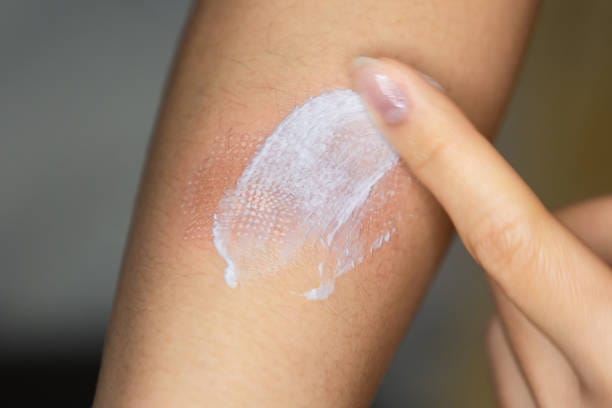
Immediate Post-Treatment Care
Depending on the removal method, your dermatologist will apply specific instructions right after your procedure. However, general post-care steps include the following:
Area Clean – After treating the area with gentle soap and water to prevent infection. Avoid harsh scrubbing.
Apply antibiotic Ointment—A prescribed or over-the-counter ointment will help keep the wound moist and decrease the chance of a scar.
Bandage – If a Bandage is needed, cover it with it. Change the dressing as advised.
Long-Term Care to Minimize Scarring
1. Hydrated skin heals faster, and moisturising daily will help your acne scabs. Preventing scab formation depends on using a gentle moisturiser or healing ointment (like petroleum jelly) on dry wounds, as dry wounds can cause scarring.
2. Don’t Sunbathe. Going out in the sun with newly treated skin may darken it, increasing pigmentation problems. After the area heals, it will become sensitive to the sun, so always apply SPF 30+ sunscreen.
3. Pick scab – leave the wound on its own to heal. Scabs can be annoying because you may be tempted to pick at them, and healing can be slowed, and a permanent scar can be caused by picking at scabs.
4. Stay Away from Physical Irritation – Refrain from scratching, rubbing or over-movement near the area treated if there were stitches in use.
How Long Does Healing Take of Scar Free Mole Removal?
The healing time will depend on the method you use for mole removal:
- Laser & Cryotherapy: 1–2 weeks to recover completely with little marks.
- Shave Excision: 1–3 weeks skin will blend naturally.
- Surgical Excision (with stitches): Skin will take 2–4 weeks to heal, and the scar may take months to fade.
Additional Scar Prevention Tips For Scar Free Mole Removal
You can use silicone gel or sheets to flatten and fade scars over time.
Gently Massaging the Area with Vitamin E or Rosehip Oil—If this scar is completely healed, massage the skin with vitamin E or rosehip oil to improve its appearance.
Head for Professional Treatments. If scarring does happen, you’ll be better off with laser resurfacing or a micro needling device.
The best practices on scar-free mole removal will ensure that you get scar-free mole removal and achieve flawless, even-toned skin.
How to Choose the Right Mole Removal Method for Scar Free Mole Removal
The procedure selected mostly determines the scar-free mole removal. The method will depend on the size, depth, location, and skin type. Therefore, choosing the most suitable procedure for preventing scars is important.
Minimally Invasive Techniques for Scar Free Mole Removal
Laser mole removal is a top choice if the moles are small and flat. This method involves targeting concentrated light energy on the mole to break down the pigment without cutting or stitching, thereby lessening the chance of scarring. It is especially effective on dark superficial moles and has a short recovery time. However, the complete removal of the accumulated material may require multiple sessions.
It is also possible to use shave excision, which would be best suited for textured moles. A dermatologist shaves a sharp precision blade the mole off at the skin’s surface. This method has very little scarring since it does not penetrate deeply into the skin. However, healing is quick, and any early redness or slight discoloration may take a while to fade.
It is a non-invasive technique that involves freezing the mole with liquid nitrogen. As time passes by, the mole dries up and eventually falls off on its own. Although effective, it can result in temporary pigmentation changes in dark skin tone. So, when performed properly, it never leaves any noticeable scarring.
Advanced Procedures for Larger or Deeper Moles
Electrosurgery is a suitable option for moles deeper into the skin. Controlled heat removes the mole layer by layer in a blood vessel sealing fashion, eliminating or minimising the bleeding. Aftercare is required, and the skin heals well with minimal scarring.
Surgical excision is preferred when the mole is large or potentially cancerous. It is a cutting-out procedure in which the mole is removed and the skin is closed with stitches. This method has a greater risk of scarring, but with an expert process and post-procedure care, the skin can heal nicely.
Scar-Free Mole Removal
Not everyone has the same characteristics as some moles will be tender, some will be freckle-like, some will be large, some will be medium, some will be small, and some will stand out from the skin. In contrast, others won’t; some will appear on the chest, back, eyelids, face, buttocks and shoulders, and some will be around the mouth and nose. Individual skin type and characteristics play a role in the best mole removal technique for an individual. If the mole is on the skin's surface and is smaller than laser removal, shaving excision or cryotherapy is the better approach given its effectiveness with a lesser likelihood of scarring. Electrosurgery or surgical excision is needed for deeper or irregular moles and can cut off maximum blood supply for less noticeable scars if strict aftercare is followed.
Before mole removal, it is important to consult a dermatologist. They will check the mole, recommend the treatment, and provide aftercare guidance. Scar-free mole removal is possible if you use the proper method and care, and your skin will look clear and healthy afterwards.
Best Aftercare Practices for Scar-Free Mole Removal
Aftercare is essential for scar-free mole removal and skin healing. Proper post-procedure care following the right procedure minimises the chances of scarring, infection, and pigmentation changes.
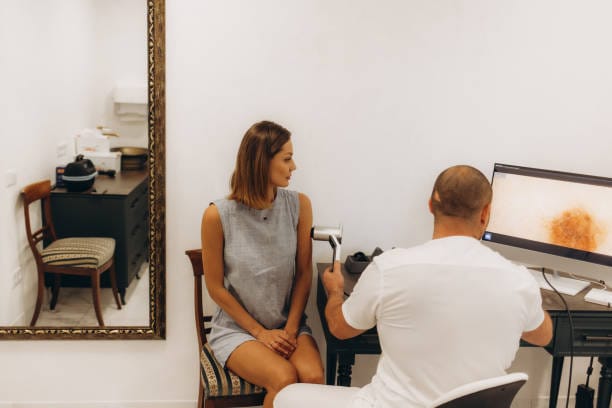
Immediate Aftercare: First 24–48 Hours
After mole removal, the treated area will be red, swollen, or slightly tender. Your dermatologist will apply the bandage to the site to protect it from bacteria and other irritants. To promote proper healing:
- Keep the area clean and dry. It shouldn’t be washed for at least 24 hours unless instructed.
- Apply prescribed ointments. Antibacterial creams ensure that infection doesn’t occur and help speed up healing.
- Avoid touching or scratching. It can introduce bacteria and does delay healing.
- Limit sun exposure. UV rays cause the area to darken and increase hyperpigmentation as it heals.
Healing Stage: First Week of Scar Free Mole Removal
When it repairs, the skin may form a protective scab over the treated area. It’s important to:
- Allow the scab to fall off naturally. It can’t be picked at without scars or without slowing healing.
- Gently clean the area. If you want to avoid irritation, use mild soap and lukewarm water.
- Reapply fresh bandages if needed. Deep excisions require wound protection, which is applied all around the wound.
Minor itching is common at this stage as new skin forms over the old, cracked skin. If this action does not relax your body, a dermatologist can help you apply a moisturiser that is specifically used according to market recommendations.
Long-Term Scar Prevention: Weeks to Months With Scar Free Mole Removal
Additional care after the wound has healed allows for less scarring and speedy skin regeneration.
Moisturise daily. Keeping the skin hydrated enhances elasticity and decreases your chances of having scars on your skin popping out.
Apply silicone scar gels or sheets. These help minimise the appearance of scars over time and flatten them.
Apply sunscreen (SPF 30 or higher). Dark skin from sun exposure can make the healed skin seem darker and more noticeable.
Massage the area gently. Light massaging breaks down scar tissue after the skin has healed completely.
Signs of Complications
Most mole removals are done without issue and can heal by watching out for infection or abnormal scarring that includes:
- Redness, swelling, or pus formation that keeps coming back.
- Keloid or hypertrophic scars are raised, thickened scars.
- No fading og skin discoloration.
Consult your dermatologist immediately if any of these take place.
Thanks to the aftercare steps mentioned above, mole removal leaves your skin scar-free and free of blemishes or spots.
Why Choose Revitalise London for Scar Free Mole Removal?
Choosing the right clinic for scar-free mole removal is crucial to obtaining the best medical outcomes. At Revitalise London, we care for you with our expert, state-of-the-art, personalised solutions, making the healing process smooth and scar-free.
Expert Dermatologists for Precise Scar Free Mole Removal
Mole removal is a delicate procedure, precise and demanding, to minimise scarring. Our experienced dermatologists at Revitalise London are readily available to treat scar-free mole removal with medical techniques to obtain great work. Before the procedure, we do a thorough skin assessment of the mole and remove it using the most appropriate method for its size, location, and depth.
We understand that patients are also concerned about scarring, so we do everything we can to prevent scarring. If we remove moles from the face, neck, or other visible areas, we aim to leave your skin as natural as possible.
Advanced Techniques for Scar Free Mole Removal
A variety of modern state-of-the-art methods are used to minimise trauma to the skin and reduce the risk of scarring. These include:
- Laser Mole removal prevents scarring. A laser targets and breaks down the mole pigment without cutting the skin.
- Acid procedure: This uses a cream applied to the skin before surgery to identify the mole.
- Deep Mole Treatment: If moles are located deeper beneath the skin, we use fine suturing techniques from the smallest possible size to minimise the marks left behind.
- Freezing (cryotherapy) the mole off with liquid nitrogen provides a clean removal with minimal effect on surrounding skin.
Mole removal involves each method chosen depending on the characteristics of the mole and your skin type to leave you with no scar.
Scar-Free Healing Aftercare Program.
When you come to Revitalise London, you won’t eliminate moles; your skin heals beautifully. Our personalised aftercare plans include, to get the best scar-free mole removal results,
Specialized post-treatment skincare advice.
Silicone gels and healing ointments can reduce inflammation and aid in skin regeneration.
Sun protection is recommended to prevent pigmentation changes in the treated area.
Monitoring of healing and address of any concerns through follow-up appointments.
We applied dermatologist-approved aftercare, and you can be assured that you won’t have any noticeable scars with the help of your aftercare plan.
Why Trust Revitalise London for Scar-Free Mole Removal?
Choosing Revitalise London also means choosing expertise, safety and long-lasting results. Here’s why we stand out:
- We have years of experience performing mole removal and scar prevention.
- Latest medical equipment: This is so that we have the best aesthetic results with state-of-the-art technology.
- Patient care: Our patient care is unique. It is personalised for every patient, with a customised treatment plan for maximum healing.
- Minimally invasive: We practice minimally invasive procedures for patient comfort.
If you trust Revitalise London for mole removal without leaving scars, you choose a practice that prioritises skin health and the prospective aesthetic outcome. Book a consultation today to achieve smooth, flawless skin, which you can only get with confidence.

